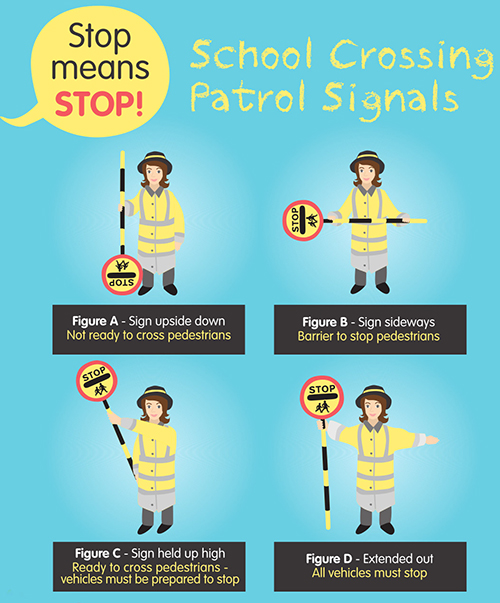School crossing patrol officers help children and adults to safely cross busy roads outside schools. Even where a school crossing patrol is provided, it remains the responsibility of the parent or guardian of the child to ensure they travel to and from school safely.
When a school crossing patrol officer displays their STOP sign, motorists must stop. Failing to do so is breaking the law, and drivers will be reported, risking a fine of up to £1000 and 3 penalty points on their licence.

